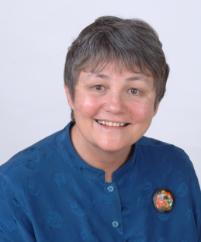Indigenous Australians who want to die in homelands face obstacles
Published on 29 May, 2008

Lack of transport is just one of the issues that health professionals providing end-of-life care in remote Aboriginal communities face.Equipment shortages, unreliable power supplies, poor discharge planning for patients treated in metropolitan hospitals, problems with transport, and lack of telephone access, are just some of the problems faced by health professionals providing end-of-life care in remote Aboriginal communities.
These findings are from NHMRC-funded research into palliative care service delivery in the Northern Territory, conducted by the International Program of Psycho-Social Health Research (IPP-SHR) at Central Queensland University (CQU).
"There are strong cultural reasons driving Aboriginal peoples' desire to die at home," said NHMRC Senior Research Fellow and IPP-SHR Director, Dr Pam McGrath.
"We found many dedicated health workers who understood the need for people to die at home, but whose efforts were thwarted by the huge practical obstacles they faced every day," she said.
"It is essential that we build up local services and gain funding to improve basic infrastructure."
The study found that equipment required by palliative care patients, such as bed lifters and oxygen concentrators, was often unavailable and that long delays were common for replacing equipment which had broken down. Often equipment was found to be unsuitable, such as wheelchairs which were useless for patients travelling on sand.
Electricity is typically not available in homelands. The solar power or generator power available was found to be unreliable, often expensive and inadequate for continuous operation of palliative care equipment, causing patients to be fearful of remaining at home.

Dr Pam McGrath believes there are strong cultural reasons driving Aboriginal peoples' desire to die at home.Inadequate discharge planning by staff in metropolitan hospitals often resulted in patients being sent home after treatment with lists of required equipment and medication that was either unavailable in the homelands or would take weeks to arrive.
Lack of transport was a serious issue for patients who had to travel for medical care as families often do not own cars, there are restrictions to bus and plane services, patients are often too unwell to travel the vast distances and homelands are often inaccessible during the wet season.
"It is important to build up local health services and to improve infrastructure in the rural and remote areas instead of adding distress to the Aboriginal patients by moving them," said Dr McGrath.
Cultural factors found to influence the desire to die at home included Aboriginal peoples' belief in 'death country', the returning of the dying individual's spirit to the land, a desire to be cared for by family, and suspicion and dislike of metropolitan hospitals.
Further information on this and other IPP-SHR studies are included in IPP-SHR's quarterly newsletter, ‘Psych-Social Update' Volume 3 Issue 1.
http://ipp-shr.cqu.edu.au/enews/psu/03010408/index.php
For further information or an interview contact Dr Pam McGrath, by telephone: (07) 3374 1792 or (07) 3025 3377, or by email: pam_mcgrath@bigpond.com or ipp-shr@cqu.edu.au

